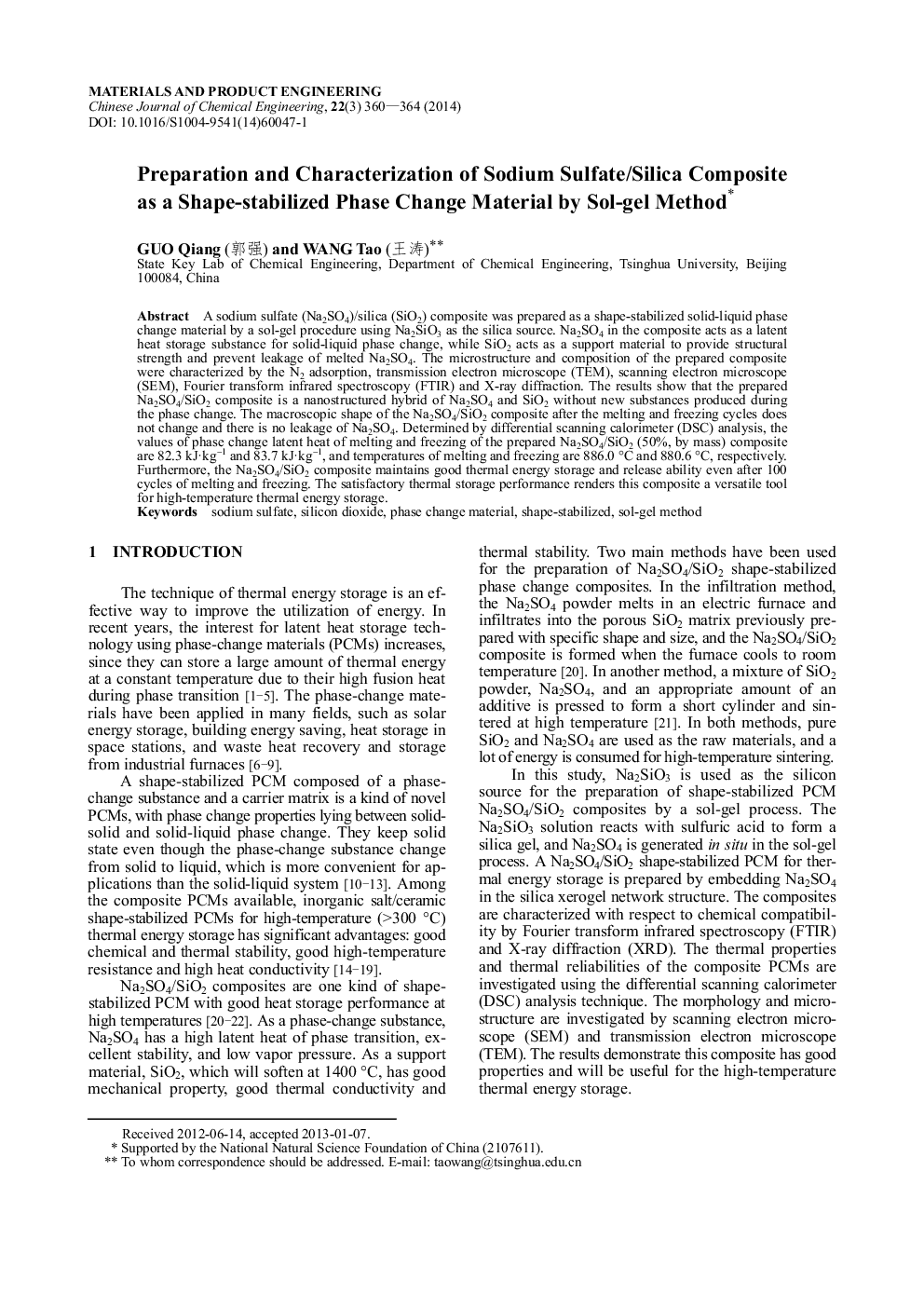| کد مقاله | کد نشریه | سال انتشار | مقاله انگلیسی | نسخه تمام متن |
|---|---|---|---|---|
| 166403 | 1423413 | 2014 | 5 صفحه PDF | دانلود رایگان |
A sodium sulfate (Na2SO4)/silica (SiO2) composite was prepared as a shape-stabilized solid-liquid phase change material by a sol-gel procedure using Na2SiO3 as the silica source. Na2SO4 in the composite acts as a latent heat storage substance for solid-liquid phase change, while SiO2 acts as a support material to provide structural strength and prevent leakage of melted Na2SO4. The microstructure and composition of the prepared composite were characterized by the N2 adsorption, transmission electron microscope (TEM), scanning electron microscope (SEM), Fourier transform infrared spectroscopy (FTIR) and X-ray diffraction. The results show that the prepared Na2SO4/SiO2 composite is a nanostructured hybrid of Na2SO4 and SiO2 without new substances produced during the phase change. The macroscopic shape of the Na2SO4/SiO2 composite after the melting and freezing cycles does not change and there is no leakage of Na2SO4. Determined by differential scanning calorimeter (DSC) analysis, the values of phase change latent heat of melting and freezing of the prepared Na2SO4/SiO2 (50%, by mass) composite are 82.3 kJ·kg−1 and 83.7 kJ·kg−1, and temperatures of melting and freezing are 886.0 °C and 880.6 °C, respectively. Furthermore, the Na2SO4/SiO2 composite maintains good thermal energy storage and release ability even after 100 cycles of melting and freezing. The satisfactory thermal storage performance renders this composite a versatile tool for high-temperature thermal energy storage.
Journal: Chinese Journal of Chemical Engineering - Volume 22, Issue 3, March 2014, Pages 360-364
